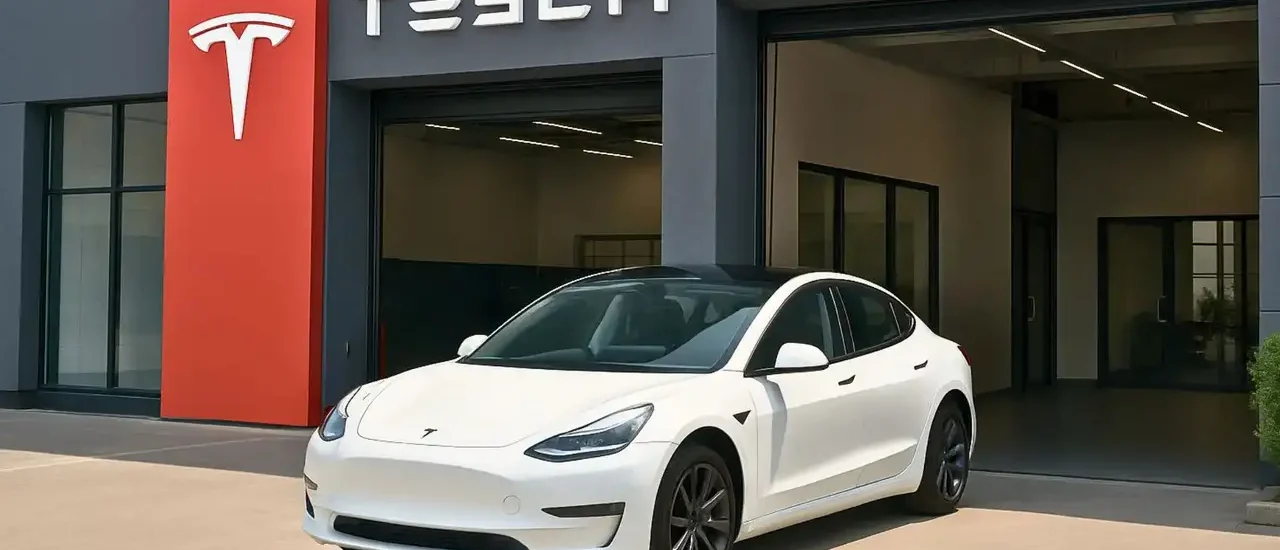Executive Summary
Tesla Inc. has emerged not merely as a car manufacturer but as a transformational force redefining how modern automotive companies operate, compete, and scale. Central to Tesla’s disruptive edge is its radical use of vertical integration—a strategy long abandoned by traditional automakers in favor of lean, outsourced, supply-chain-driven models. From battery production to in-house software development, from direct sales to proprietary charging infrastructure, Tesla has internalized much of what others have outsourced. This integrated model provides Tesla with exceptional agility, cost control, innovation speed, and customer experience consistency.
In contrast to incumbents who rely on tiered suppliers, franchise dealerships, and third-party software vendors, Tesla has built an end-to-end ecosystem that spans design, manufacturing, software, distribution, and servicing. While this model incurs upfront capital intensity and operational complexity, it allows Tesla to move with unprecedented speed, control margins, and future-proof its technology roadmap.
This case study analyzes how Tesla’s vertical integration strategy unfolded, the rationale behind it, its executional nuances, the competitive advantages it unlocked, and the broader implications for the global automotive industry. It draws learnings from Tesla’s journey that are relevant not only to automakers but to any enterprise navigating industry transformation.
Background / Situation
In the early 2000s, the global automotive industry was characterized by high consolidation, deeply entrenched value chains, and a slow pace of innovation. Major carmakers like General Motors, Ford, Toyota, and Volkswagen operated through sprawling supplier networks and multi-tier manufacturing ecosystems. Most of their components, from powertrains to infotainment systems, were sourced from specialized suppliers, and vehicles were distributed via independently operated dealership networks. The focus was on operational efficiency, scale manufacturing, and incremental model updates.
Into this mature and largely saturated market stepped Tesla, a Silicon Valley startup founded in 2003. Initially viewed as a niche EV company catering to wealthy environmentalists, Tesla was underestimated by most industry observers and competitors. Its decision to build an electric sports car, the Tesla Roadster, using a Lotus chassis, raised eyebrows. However, under the leadership of Elon Musk, who joined as chairman in 2004 and later became CEO, Tesla began to chart a radically different course.
The vision was not just to build electric vehicles but to accelerate the world’s transition to sustainable energy. Achieving this goal required more than swapping out an internal combustion engine for a battery; it required rethinking every aspect of the automotive value chain. Musk realized early on that relying on traditional supply chain models would slow Tesla down and constrain its innovation potential. The company decided to embrace vertical integration as a core strategic principle—a move that would later position it to lead the electric vehicle revolution.
Strategy / Approach Taken
Tesla’s vertical integration strategy was both expansive and intentional. It involved taking control of critical functions traditionally outsourced by automakers. The rationale was threefold: speed up innovation, reduce dependencies on legacy suppliers ill-equipped for EV technology, and optimize the end-to-end customer experience.
One of Tesla’s earliest strategic moves was to invest in battery technology, a core differentiator in electric mobility. Rather than sourcing generic battery packs from third parties, Tesla partnered with Panasonic to develop proprietary lithium-ion cells and established its own Gigafactory in Nevada. This ensured supply security, optimized cost structures, and allowed for continuous improvement in energy density and thermal management.
In software and user experience, Tesla made another contrarian choice. While traditional automakers relied on middleware providers and separate infotainment vendors, Tesla built its vehicle operating system in-house. This allowed for over-the-air updates, seamless integration between hardware and software, and real-time performance enhancements—a defining feature that contributed significantly to brand differentiation.
Tesla also chose to manufacture key components such as electric motors, inverters, and self-driving chips internally. This gave the company control over the performance and evolution of its drivetrain technology. By not being beholden to external suppliers’ roadmaps, Tesla could rapidly iterate and push the envelope of efficiency and power output.
On the sales and service front, Tesla eliminated the dealership model entirely. It introduced direct-to-consumer sales through company-owned showrooms and an online sales platform. This not only reduced distribution costs but ensured pricing transparency and a consistent customer experience globally. Post-sales servicing was handled by Tesla service centers and mobile service fleets, while software-based diagnostics proactively identified and fixed issues remotely.
Tesla’s Supercharger network was another significant component of its vertical strategy. Recognizing that lack of charging infrastructure was a barrier to EV adoption, Tesla deployed its own proprietary network of fast-charging stations across key markets. This move added significant capital burden but created a competitive moat. Tesla drivers had exclusive access to a reliable and fast-charging network, eliminating a key pain point in EV ownership.
Furthermore, Tesla’s supply chain for raw materials, especially lithium and nickel, became another area of vertical focus. The company pursued direct sourcing agreements and even explored owning mining operations to secure future supply for its battery production.
This holistic approach to vertical integration wasn’t merely about internalizing processes; it was about building an ecosystem where every part of the value chain reinforced the other—faster innovation led to better products, which improved customer satisfaction, which in turn justified reinvestment into better technology and infrastructure.
Implementation
The implementation of Tesla’s vertical integration strategy was marked by a series of bold bets, rapid execution cycles, and a willingness to defy conventional norms. Unlike most automakers who optimized for predictable quarterly results, Tesla prioritized long-term capability building, often at the expense of short-term profitability.
The Gigafactory in Nevada, a joint venture with Panasonic, was the first major infrastructure investment aligned with Tesla’s integration vision. Construction began in 2014, and by 2020, it had become the world’s largest battery factory. Tesla expanded this model with Gigafactories in Shanghai, Berlin, and Texas, each encompassing multiple verticals including manufacturing, assembly, and logistics.
On the software side, Tesla hired engineers from tech companies rather than traditional OEMs, fostering a culture of innovation. Its vehicles were equipped with powerful onboard computers that enabled continuous improvements through over-the-air updates. Tesla’s Autopilot and Full Self Driving (FSD) features were also developed in-house, relying on a neural net architecture trained on billions of miles of driving data collected from the fleet.
To implement direct sales, Tesla invested in physical showrooms located in high-footfall areas like malls and airports. It also created an intuitive online ordering process where customers could customize and order their car with a few clicks. This required changes to state dealership laws in several U.S. states, and Tesla often engaged in legal battles to retain its direct-sales model.
Building the Supercharger network required coordination with local governments, real estate partners, and utility companies. Tesla designed proprietary charging hardware and software to ensure interoperability and performance. This infrastructure was rolled out in key EV markets, including the U.S., Europe, and China, ahead of demand to instill confidence in prospective buyers.
Tesla’s in-house chip design, showcased in its FSD computer introduced in 2019, was a testament to its ambition to control the brain of the car. Rather than rely on Nvidia or Intel, Tesla built its own silicon optimized for AI-based autonomous driving. This also allowed Tesla to maintain tighter integration between software algorithms and hardware processing capabilities.
Tesla also implemented vertical practices in manufacturing innovation. It adopted large-scale casting techniques using Giga Press machines, reducing the number of parts in the vehicle body and improving structural efficiency. This innovation, difficult for traditional OEMs to replicate due to legacy processes, was a result of Tesla’s ability to redesign its manufacturing methods from scratch.
These implementations were not without challenges. Production bottlenecks during Model 3 ramp-up in 2017–18, quality control concerns, and the high capital burn rate attracted criticism. However, Tesla’s agile culture and leadership resolve enabled it to overcome these hurdles and iterate faster than legacy competitors.
Results & Impact
Tesla’s vertically integrated strategy yielded significant competitive advantages, transforming it from a fringe EV player into the most valuable carmaker in the world. By 2022, Tesla had delivered over 1.3 million vehicles globally and commanded a market capitalization exceeding $1 trillion at its peak.
Financially, Tesla’s margins surpassed those of traditional automakers. In 2022, Tesla posted an automotive gross margin of around 28%, compared to industry averages of 10–15%. Much of this margin superiority came from in-house production efficiencies, avoidance of dealership cuts, and software-based upselling like the FSD package.
Tesla’s ability to respond quickly to global supply chain disruptions—such as the semiconductor shortage during the COVID-19 pandemic—was enhanced by its vertical control. While other OEMs shut down production lines due to chip shortages, Tesla rewrote software to accommodate alternative chips, demonstrating resilience.
In terms of product innovation, Tesla’s pace remained unmatched. Frequent software updates enhanced vehicle capabilities post-purchase, increasing customer satisfaction and vehicle lifespan. This continuous improvement model created a sense of product evolution, more akin to smartphones than cars.
Brand-wise, Tesla became a cult brand with minimal marketing spend. Its integration of hardware and software created a unique user experience that reinforced loyalty. The Tesla app allowed users to control vehicle functions, schedule service, and access charging history—delivering a level of integration unmatched by rivals.
The Supercharger network became a strategic asset. By 2023, Tesla had over 45,000 Superchargers globally. This infrastructure played a critical role in reducing range anxiety and enabling long-distance travel, enhancing the utility of Tesla vehicles and further embedding customers into the Tesla ecosystem.
Tesla’s vertical integration also helped it accelerate innovation in areas like energy storage (Powerwall, Megapack) and solar energy (Solar Roof), enabling the company to position itself as a sustainable energy platform, not just a carmaker.
Best Practices / Learnings
Tesla’s vertical integration journey offers several strategic lessons. First, it underscores the value of aligning integration with innovation. Rather than internalize for control’s sake, Tesla did so to enable faster iteration, superior customer experience, and technical differentiation. This made integration a strategic enabler, not an operational burden.
Second, Tesla showed that vertical integration is most effective when it supports ecosystem thinking. Every part of Tesla’s value chain, from manufacturing to charging to software, was designed to reinforce others. This created a flywheel effect where customer engagement, data, and feedback loops continually improved the product.
Third, Tesla’s approach highlights the importance of designing infrastructure ahead of scale. The Gigafactories and Supercharger networks were expensive bets, but they enabled Tesla to meet rising demand without compromising quality or experience. This foresight ensured that growth didn’t come at the cost of dilution.
Fourth, Tesla’s in-house software capability exemplifies how vertical integration can future-proof a business. By owning the codebase and operating system, Tesla positioned itself to evolve into an autonomous driving and AI-led transportation company, not just an EV maker.
Finally, Tesla’s journey illustrates that vertical integration requires a strong cultural and leadership backbone. It involves taking on risks, accepting short-term inefficiencies, and building capabilities from scratch. It is not a strategy for the risk-averse but can yield immense returns when aligned with a bold vision.
Sources
- Tesla Annual Reports (2015–2023)
- Elon Musk Interviews – Lex Fridman Podcast, TED, Wall Street Journal
- ARK Invest Research Reports on Tesla
- Bloomberg, “Inside Tesla’s Gigafactory Machine”
- MIT Sloan Management Review, “Rethinking Vertical Integration: Tesla’s Contrarian Strategy”
- Reuters – “Tesla Gross Margins and Global Production Trends”
- Statista – Tesla Global Deliveries and Supercharger Deployment
- Wired – “How Tesla Built Its Own Chips for Self-Driving Cars”






